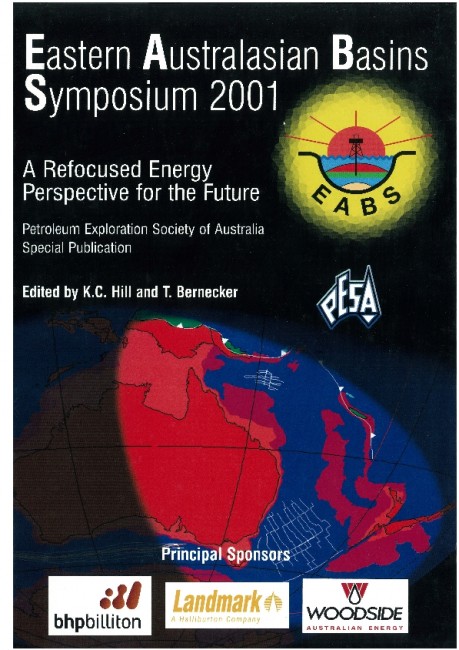Publication Name: Eastern Australian Basins Symposium 2001
Authors: T. Bernecker and A.D. Partridge
Date Published: November 2001
Number of Pages: 35
Reference Type: Magazine Article
Abstract:
The Emperor and Golden Beach subgroups, new subdivisions of the lower part of the Latrobe Group in the Gippsland Basin, are interpreted as basin-wide unconformity-bounded depositional systems that record the key break-up events in the basin during its transition from a continental rift system to the commencement of classic continental margin-style deposition.The older Emperor Subgroup is dominated by fine-grained lacustrine sediments of the Kipper Shale that were largely deposited in deep rift-valley lakes. The oldest sediments of the subgroup, derived from the uplifted basin margins, are assigned to the alluvial fan deposits of the Kersop Arkose and fluvial, deltaic and shallower-water lacustrine facies of the Admiral Formation. The youngest sediments, assigned to the Curlip Formation, comprise mixed deltaic-lacustrine, fluvial as well as alluvial fan facies and represent rejuvenated extensional tectonism. All three latter formations are probable partial facies equivalents of the Kipper Shale.
Following a depositional hiatus, the initial episode of seafloor spreading in the Tasman Sea is represented in the Gippsland Basin by the over 2 km thick Golden Beach subgroup. It is subdivided into the marine shales and minor sandstones of the Anemone Formation and non-marine to occasionally paralic Chimaera Formation. The eaward extent of coals in the latter define arcuate palaeoshorelines, while intercalated basaltic volcanics define local volcanic centres near the bounding Rosedale and Darriman Fault systems.
Both Emperor and Golden Beach Subgroups play important roles in a variety of hydrocarbon plays in the basin and relevant petroleum systems elements are recognised. Interpretation of newly available aeromagnetic
and seismic data has concluded that these older subgroups are prospective with respect to both oil and gas in unexplored parts of the basin, including the deep-water area.


